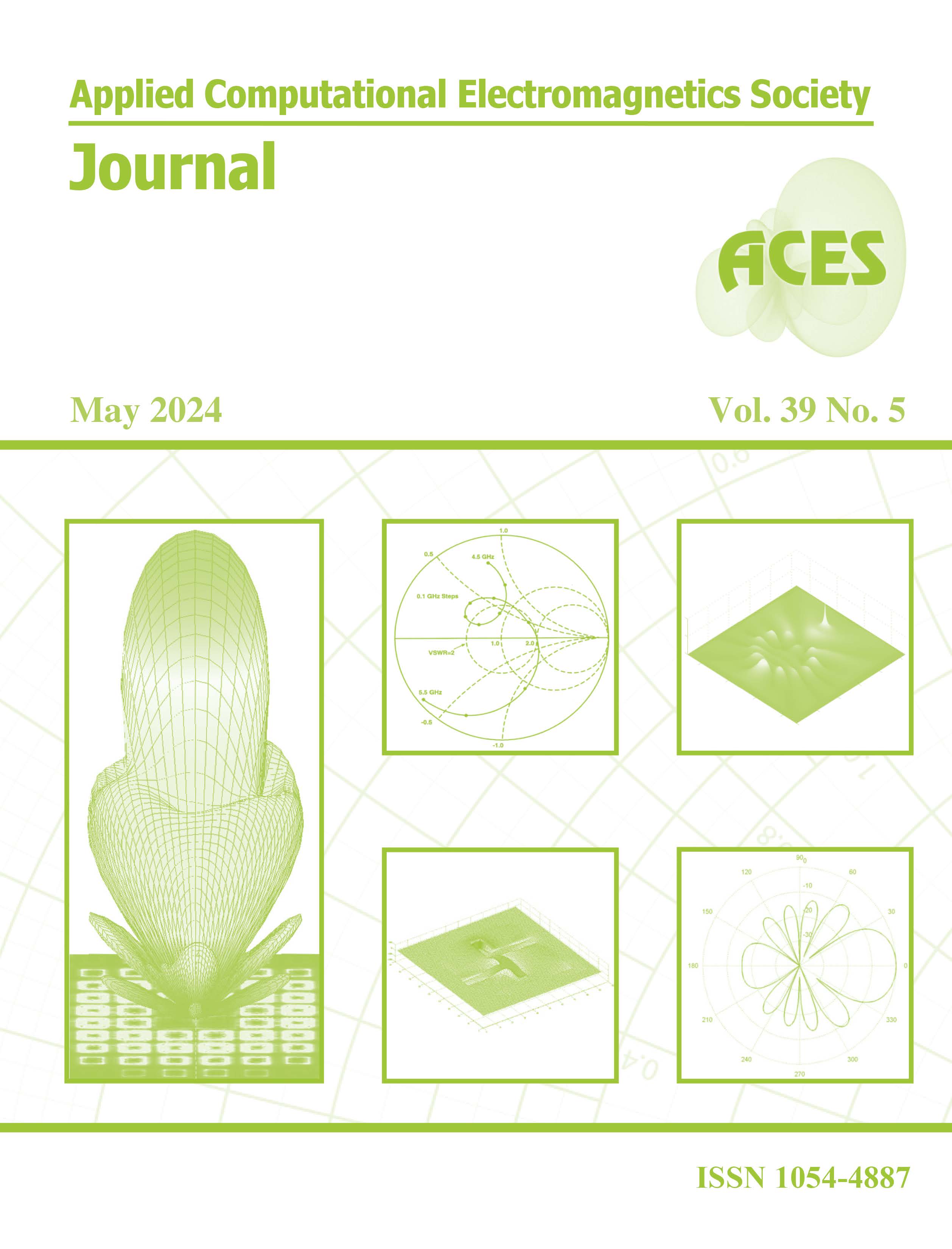A Novel Proximal Policy Optimization Approach for Filter Design
DOI:
https://doi.org/10.13052/2024.ACES.J.390502Keywords:
bandpass filters (BPF), coupling matrix synthesis, Proximal Policy Optimization (PPO)Abstract
This paper proposes a proximal policy optimization (PPO) algorithm for coupling matrix synthesis of microwave filters. With the improvement of filter design requirement, the limitations of traditional methods such as limited applicability are becoming more and more obvious. In order to improve the filter synthesis efficiency, this paper constructs a reinforcement learning algorithm based on Actor-Critic network architecture, and designs a unique filter coupling matrix synthesis reward function and action function, which can solve combinatorial optimization problems stably.
Downloads
References
D. Liang, X. Zhang, B. Yang, and D. Young, “Overview of base station requirements for RF and microwave filters,” in 2021 IEEE MTT-S International Microwave Filter Workshop (IMFW), pp. 46-49, 2021.
R. J. Cameron, C. M. Kudsia, and R. R. Mansour, Microwave Filters for Communication Systems: Fundamentals, Design, and Applications. Hoboken, NJ: John Wiley & Sons, 2018.
F. Feng, C. Zhang, J. Ma, and Q.-J. Zhang, “Parametric modeling of EM behavior of microwave components using combined neural networks and pole-residue-based transfer functions,” IEEE Transactions on Microwave Theory and Techniques, vol. 64, no. 1, pp. 60-77, 2016.
M. Ohira, A. Yamashita, Z. Ma, and X. Wang, “Automated microstrip bandpass filter design using feedforward and inverse models of neural network,” in 2018 Asia-Pacific Microwave Conference (APMC), pp. 1292-1294, 2018.
M. Ohira, K. Takano, and Z. Ma, “A novel deep-Q-network-based fine-tuning approach for planar bandpass filter design,” IEEE Microwave and Wireless Components Letters, vol. 31, no. 6, pp. 638-641, 2021.
M. Ohira, A. Yamashita, Z. Ma, and X. Wang, “A novel eigenmode-based neural network for fully automated microstrip bandpass filter design,” in 2017 IEEE MTT-S International Microwave Symposium (IMS), pp. 1628-1631, 2017.
B. Liu, H. Yang, and M. J. Lancaster, “Global optimization of microwave filters based on a surrogate model-assisted evolutionary algorithm,” IEEE Transactions on Microwave Theory and Techniques, vol. 65, no. 6, pp. 1976-1985, 2017.
J. L. Chávez-Hurtado and J. E. Rayas-Sánchez, ‘‘Polynomial-based surrogate modeling of RF and microwave circuits in frequency domain exploiting the multinomial theorem,” IEEE Transactions on Microwave Theory and Techniques, vol. 64, no. 12, pp. 4371-4381, 2016.
L. Bi, W. Cao, W. Hu, and M. Wu, “Intelligent tuning of microwave cavity filters using granular multi-swarm particle swarm optimization,” IEEE Transactions on Industrial Electronics, vol. 68, no. 12, pp. 12901-12911, 2021.
S. Koziel, J. Meng, J. W. Bandler, M. H. Bakr, and Q. S. Cheng, “Accelerated microwave design optimization with tuning space mapping,” IEEE Transactions on Microwave Theory and Techniques, vol. 57, no. 2, pp. 383-394, 2009.
Q. S. Cheng, J. W. Bandler, and S. Koziel, “Space mapping design framework exploiting tuning elements,” IEEE Transactions on Microwave Theory and Techniques, vol. 58, no. 1, pp. 136-144, 2010.
J. Schulman, F. Wolski, P. Dhariwal, A. Radford, and O. Klimov, “Proximal policy optimization algorithms,” arXiv preprint arXiv:1707.06347, 2017.
M. A. Nielsen, Neural Networks and Deep Learning, vol. 25. San Francisco, CA: Determination Press, 2015.
S. Hochreiter, “The vanishing gradient problem during learning recurrent neural nets and problem solutions,” International Journal of Uncertainty, Fuzziness and Knowledge-Based Systems, vol. 6, no. 02, pp. 107-116, 1998.
Y. Lecun, Y. Bengio, and G. Hinton, “Deep learning,” Nature, vol. 521, no. 7553, p. 436, 2015.
X. Glorot, A. Bordes, and Y. Bengio, “Deep sparse rectifier neural networks,” Journal of Machine Learning Research, vol. 15, pp. 315-323, 2011.
G. E. Dahl, T. N. Sainath, and G. E. Hinton, “Improving deep neural networks for LVCSR using rectified linear units and dropout,” in 2013 IEEE International Conference on Acoustics, Speech and Signal Processing, pp. 8609-8613, 2013.




